Please enable javascript to view the website ..
Repair help > Front-Engine Lawn Tractor repair > Front-Engine Lawn Tractor repair guides
January 1, 2015
By Lyle Weischwill
This step-by-step repair guide explains how to change a front tire on a riding lawn mower if the old tire is damaged beyond repair. Replacing the front tire is fairly easy; you just need a few tools and a manufacturer-approved riding mower part.
Follow the steps in this repair guide and video to replace the front tire on Craftsman, Husqvarna, Toro, Troybilt, Ariens, Poulan, MTD, Murray, Snapper, Yard-Man, John Deere and Weed Eater riding mowers and lawn tractors.
If you'd rather use tire sealant to repair the tire, the video How to Repair a Riding Lawn Mower Tire shows how.
Quick links
Tools required
Floor jack or bottle jack
Jack stand
Slot screwdrivers
Pry bars
Pliers
Valve stem core removal tool
Liquid detergent
Water
Wood blocks
Work gloves
Safety goggles
Compressor air supply
Repair difficulty
Time required
60 minutes or less
Repair difficulty
Time required
60 minutes or less
Replacing a front tire on a riding lawn mower
This video explains how to replace the front tire on a riding lawn mower.
01.
Park the riding mower on a level surface and set the parking brake.
Turn the ignition switch off and remove the key.
Wear work gloves to protect your hands and safety goggles to protect your eyes.
Lift the riding lawn mower hood and disconnect the spark plug wire.
Lower the tractor hood.
Tip: Disconnect both spark plug wires if your engine has 2 cylinders.
PHOTO: Disconnect the spark plug.
02.
Block the rear tires to keep the riding mower from rolling.
Position the jack under the frame and jack up the riding mower to raise the front wheel.
Place a jack stand under the frame to support the riding mower.
Remove the jack.
PHOTO: Block the rear wheel.
03.
Pull off the axle cover.
Remove the retaining ring and then pull off the washers.
Pull the tire off the axle.
PHOTO: Remove the front wheel.
04.
Remove the valve stem cap.
Remove the valve stem core, which lets any remaining air out of the tire.
Break the tire bead and pry the tire off the wheel rim on one side.
Pry the tire off the rim on the other side.
PHOTO: Pry the tire off the rim.
05.
Clean the wheel rim.
Set the new tire flat on a work surface.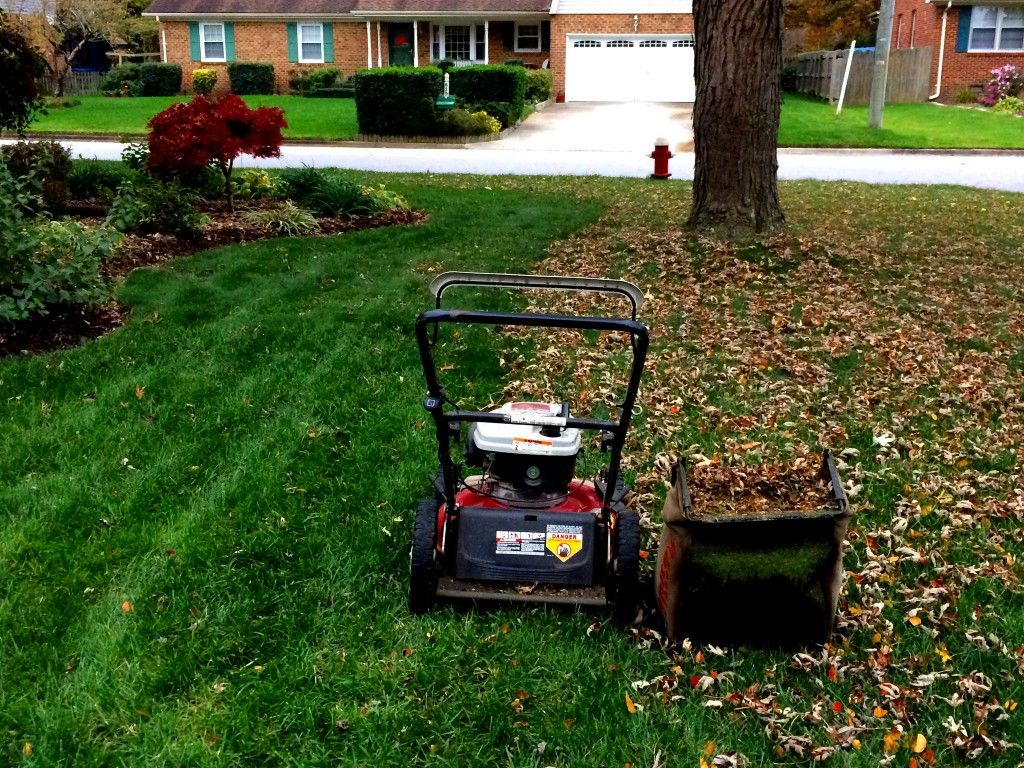
Lubricate the top tire bead with liquid detergent.
Pry the rim into the top side of the tire.
Flip the rim and tire over.
Lubricate the tire bead with liquid detergent.
Pry the remaining side of the tire onto the rim.
Warning: Use blunt tools to pry the tire to avoid damaging the new tire bead.
PHOTO: Lubricate the bead.
06.
Fill the tire with air to seat the tire bead.
Reinstall the valve stem core.
Fill the tire fully with air.
Tip: If the tire didn't fill with air, install a ratcheting tension strap around the center of the tire tread, tighten the strap to force the beads outward, and fill the tire with air to seat the tire bead. Carefully release and then remove the strap.
Tip: If the bead doesn’t seal, check the rim and replace it if you find damage.
PHOTO: Shoot air into the tire.
07.
Slide the wheel on the axle.
Reinstall the washers and snap the retaining ring onto the axle.
Push the axle cover onto the wheel.
PHOTO: Reinstall the wheel.
08.
Push the jack under the frame and raise the riding mower, and then pull out the jack stand.
Lower the riding mower to the ground.
Remove the wood blocks from the rear tires.
09.
Raise the tractor hood.
Reconnect the spark plug wire and lower the hood.
Tip: Reconnect both spark plug wires if your engine has 2 cylinders.
Warning: Undertaking repairs to appliances can be hazardous. Use the proper tools and safety equipment noted in the guide and follow all instructions. Do not proceed until you are confident that you understand all of the steps and are capable of completing the repair.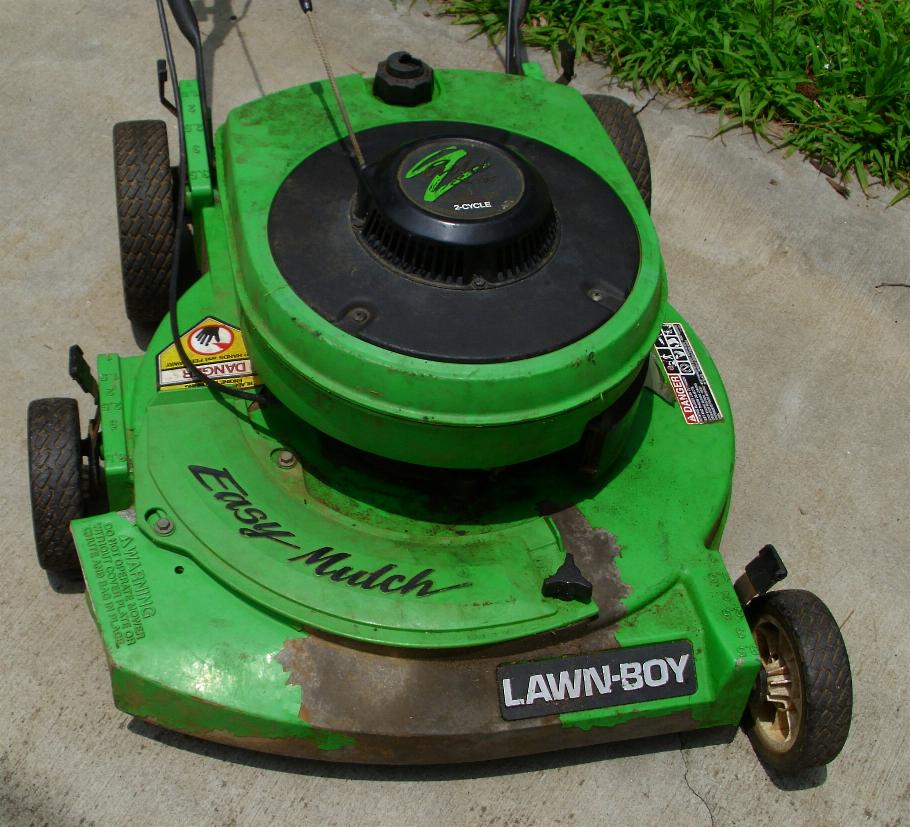 Some repairs should only be performed by a qualified technician.
Some repairs should only be performed by a qualified technician.
Choose a symptom to see related riding mower and lawn tractor repairs.
Main causes: punctured tire or inner tube, leaky valve stem, damaged wheel rim
Read moreMain causes: worn or broken ground drive belt, bad seat switch, transaxle freewheel control engaged, transaxle failure, dirty carburetor
Read moreMain causes: shift lever needs adjustment, neutral control needs adjustment
Read moreMain causes: worn or broken blade belt, broken belt idler pulley, blade clutch cable failure, bad PTO switch, damaged mandrel pulleys
Read moreMain causes: damaged cutting blade, worn deck pulley, damaged mandrel pulley, loose fasteners on mower deck components
Read moreMain causes: engine overfilled with oil, leaky head gasket or sump gasket, damaged carburetor seals, cracked fuel pump, broken fuel line
Read moreMain causes: clogged carburetor, damaged flywheel key, dirty spark plug, stale fuel, improper valve lash, engine needs a tune up
Read moreMain causes: faulty battery, bad alternator
Read moreMain causes: unlevel mower deck, dull or damaged cutting blades, worn mandrel pulleys, bent mower deck, engine needs tune up
Read moreThese step-by-step repair guides will help you safely fix what’s broken on your riding mower or lawn tractor.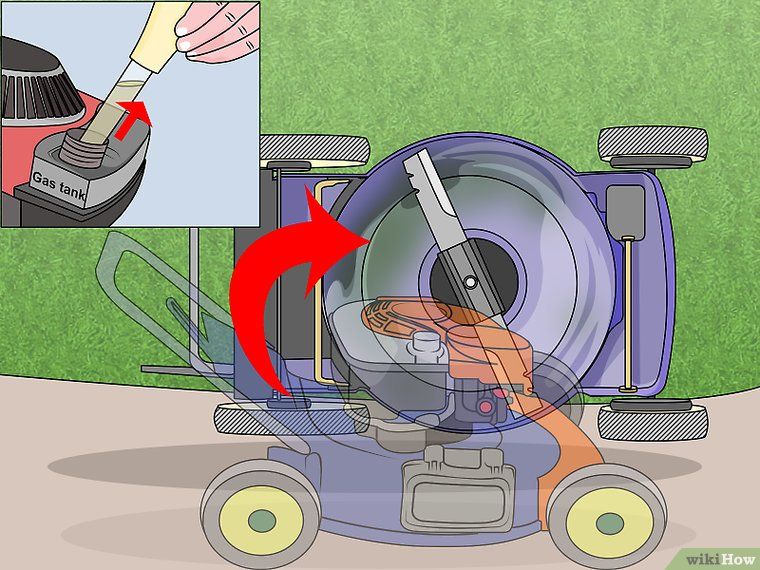
January 1, 2015
By Lyle Weischwill
Your mower can’t run on a damaged rear tire. Here’s how to install a new one.
Repair difficulty
Time required
60 minutes or less
Read moreJanuary 1, 2015
By Lyle Weischwill
If a blade on your mower is dull or bent, replace it following the steps in this repair guide.
Repair difficulty
Time required
30 minutes or less
Read moreJanuary 1, 2015
By Lyle Weischwill
Help your mower run better by replacing the fuel filter during your riding mower's annual tune-up.
Repair difficulty
Time required
15 minutes or less
Read moreUse the advice and tips in these articles and videos to get the most out of your riding mower or lawn tractor.
August 5, 2022
By Lyle Weischwill
Learn about Sears Technical Institute and the advanced technical content being developed for aspiring appliance techs.
Read moreAugust 6, 2020
By Lyle Weischwill
Learn how a blade removal tool makes replacing the blade easier and safer
Read moreApril 9, 2019
By Lyle Weischwill
Keep these 6 things on hand to keep the mower season running smoothly.
Read moreSamsung DVE52M7750V/A3-00 dryer parts
Shop GE JBP70WK4WW electric range partsShop Maytag MET8885XB02 electric range partsShop Kenmore 79096419406 electric range parts
Shop KitchenAid KEBS177YAL2 electric wall oven parts
Shop Model #917274961 Craftsman lawn tractor
Weatherking Furnace Repair Parts
Shop Craftsman 13953918D garage door opener parts
Shop Magic Chef 83EY-1 gas range partsShop Model #NX58K3310SS/AA-00 Samsung gas slide-in range
Shop MTD 31AS6HEG799 gas snowblower parts
Shop Craftsman 137212290 miter saw parts
Refrigerator Door Bin DA63-08646A
Refrigerator Parts CraftsmanNorge Refrigerator Repair Parts
Craftsman Snowblower attachment Repair Parts
Kenwood Speaker Replacement Parts
Shop Roper RT18HDXJW00 top-mount refrigerator parts
Shop Model #6209SR Roadmaster sidewalk wagon
Craftsman 12512008 wet/dry vacuum parts
This post contains affiliate links.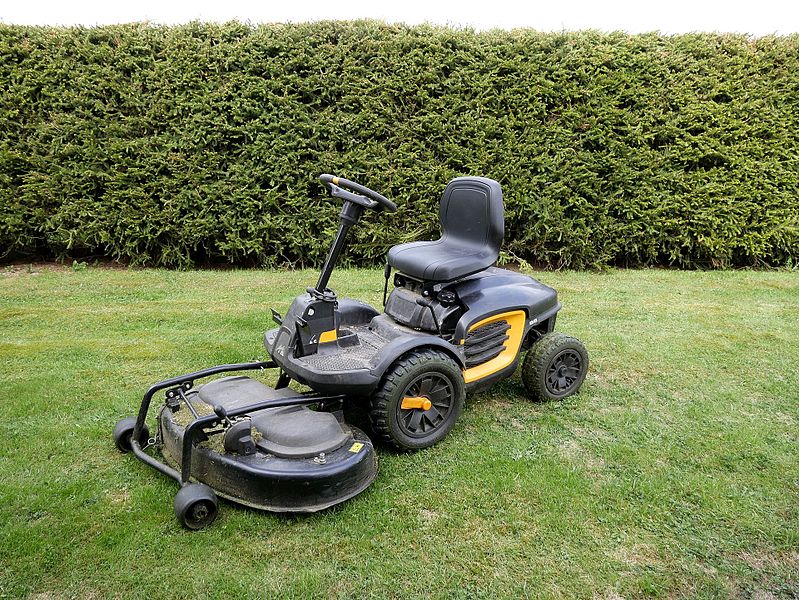 If you click and buy we may make a commission, at no additional charge to you. Please see our disclosure policy for more details.
If you click and buy we may make a commission, at no additional charge to you. Please see our disclosure policy for more details.
0shares
Apart from the blades and their engine, lawn mowers also rely on their tires. Even the smallest push mower may come with a set of tires you need to maintain. And when they get defective, replace.
But replacing lawn mower tires is not the easiest thing to do. While it doesn’t require a degree in mechanics or tons of experience – you may have some trouble finding the perfect way to do so.
Don’t worry, though. We know what you have to do to get a defective lawn mower tire out of the machine and then install a new one (or several ones).
So, do you some help changing tires on your lawnmower? Then keep scrolling.
Table of Contents
Step-by-Step Guide: How to Change a Lawn Mower Tire?Now that you’re aware of the reasons why you should replace the mower tires on time let’s go into the nitty-gritty.
The following steps will help you replace your mower’s tires in a few minutes or hours. Let’s get into it!
The first step into lawn mower tire repair is to know which type of tire your mower uses.
Tubeless tiresFor example:
Before you go any further, be sure to know which type you’re going to work with. Then, you can shop for the right tire and follow the correct guide accordingly.
Before you shop for any tire replacement, first check that you have the right size. Here’s how to check:
 The first number will tell you the diameter/thickness.
The first number will tell you the diameter/thickness.Now you can go and shop for the ideal tire for your mower. Be sure to follow these numbers so you can prevent any waste of time and money.
Now you can proceed to change the lawn mower wheels. And for that, you’ll have to start by locking the wheels. This is how:
Now that you’ve put the mower in lock mode, the wheels won’t move when you start working on them.
After securing the wheels, you need to lift the mower up. Here’s how:
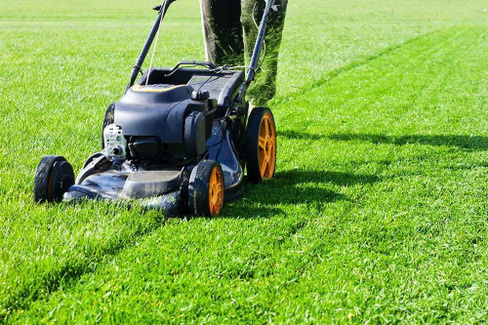 It should be even as well.
It should be even as well.Be sure the mower is secured while lifted. Otherwise, it may fall while you’re working on it.
If you want to replace the tire, be it a tube, tubeless tire, or even if it is on a spindle wheel – you’ll have to remove it from the mower. Follow these steps:
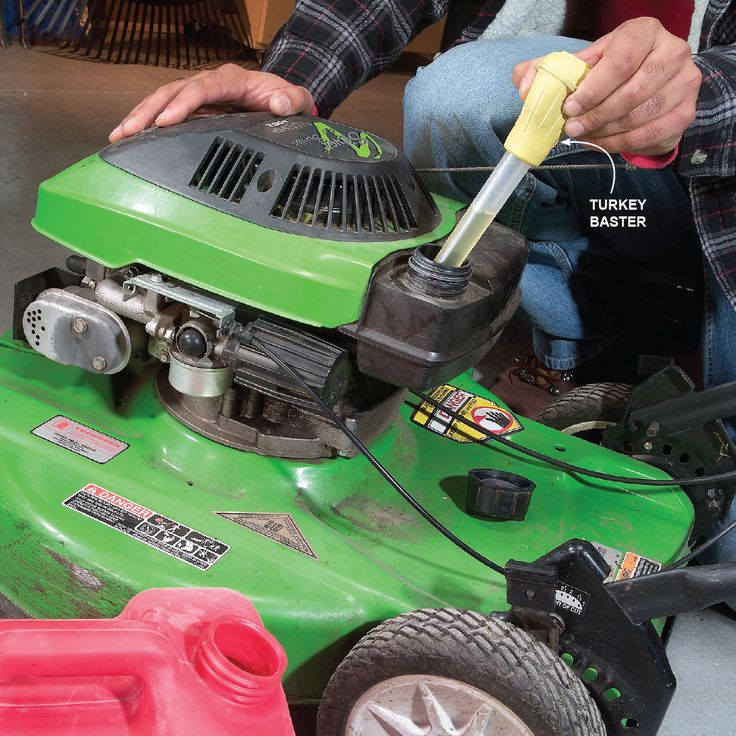
Once you’re here, the rest of the process gets exponentially easier and straightforward.
Removing the rim is relatively easy. However, it requires some strength. You may want to do this with someone else to make it easier if you aren’t particularly strong.
However, it requires some strength. You may want to do this with someone else to make it easier if you aren’t particularly strong.
Proceed this way:
 Unscrew it to deflate the tire.
Unscrew it to deflate the tire.Now that you’ve freed the tire from the rim, it is time to mount the replacement wheels. Here, you’ll also have to proceed differently depending on the type of tire.
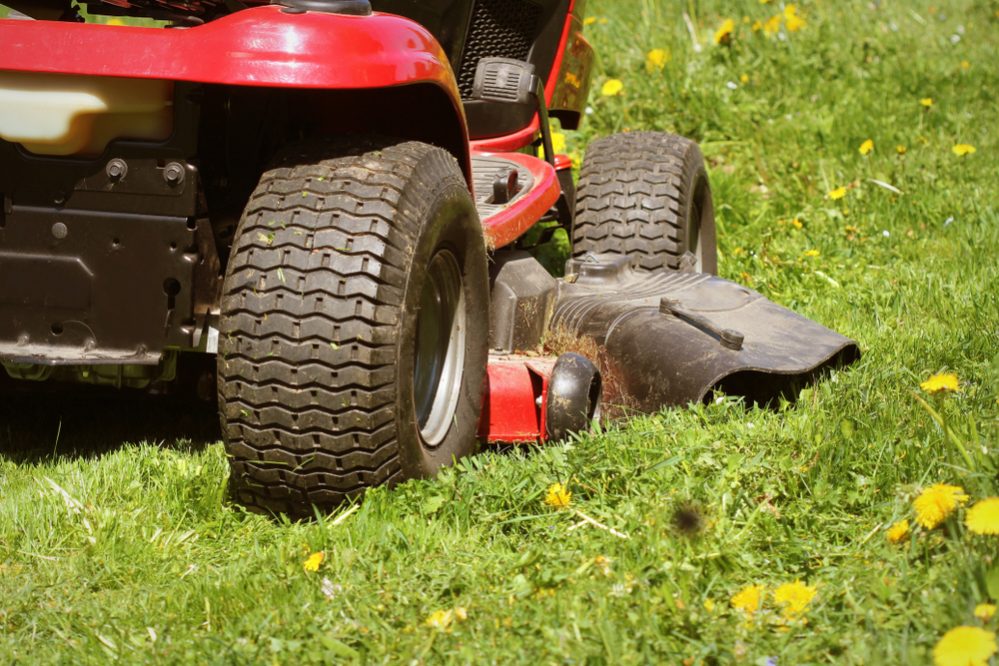 Apply some of it on the part of the tire that connects directly to the rim.
Apply some of it on the part of the tire that connects directly to the rim.If you’re using a tube tire or a spindle wheel with a standard tire, then you’ll have to look for an air compressor and fill accordingly.
Remember to place the inflating valve in the right place to prevent any issue. Try looking for the correct pressure in PSI before starting. Use a PSI meter as well.
Then just attach the air hose to the wheel valve and let it inflate. Check that the PSI is at the right level. If it is, then you’re done. Otherwise, inflate or deflate as needed.
#9. Reattach the WheelWith the tires inside the rim and inflated, then it is time to set them up again on the mower. Proceed this way:
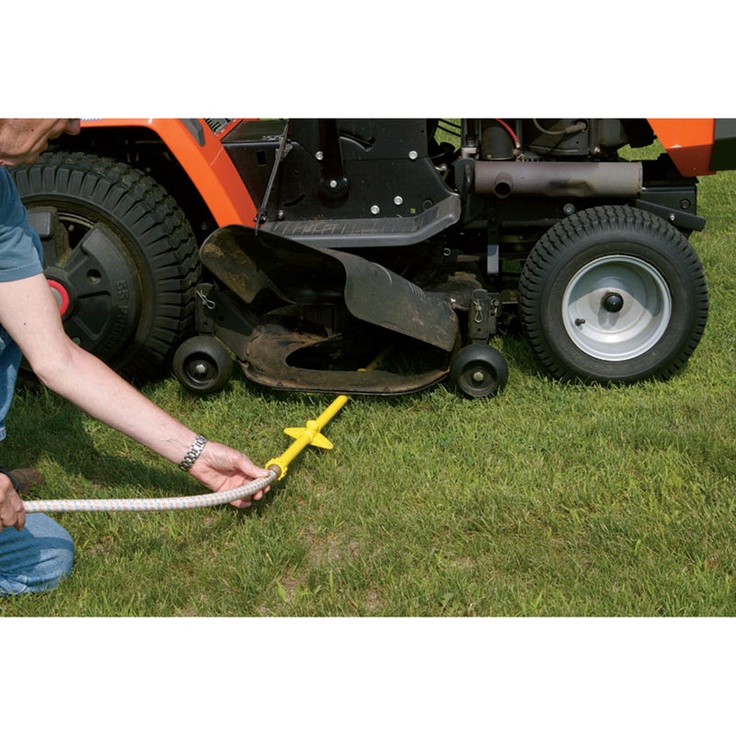
You’re almost ready now. Just check that the mower works as required.

If the mower starts working as it should and moves smoothly on the grass, then you’ve successfully changed its tires.
5 Signs You Need to Change a Lawn Mower TireThere are many obvious reasons to replace a tire from a lawnmower. For example, if it deflates after getting pinched with a nail or it doesn’t want to inflate at all – then it needs replacement.
But some other reasons may not be so obvious. And they can take several days, weeks, and even months before anything sufficiently bad happens for you to replace it.
Well, here are 5 signs that your mower’s tires may need some replacement:

If you detect any of these signs, you should replace the tire right away before it gets damaged once and for all.
Why Replace a Lawn Mower Tire?So, did you notice that your tire needs replacement? Then you’ll want to know why it is so important to change it right away. Here are three significant reasons to consider:
There’s nothing like a precisely-cut lawn that looks beautiful and even all around.
But with defective tires, the mower won’t cut consistently at all. Instead, it will shake or move too much to the sides – which could cause the blades to cut unevenly.
If you use new, properly treaded, and smooth tires on the walk-behind mower – this is less likely to happen.
Pushing the mower on thick grass? Then it should have proper tires to go through the thick leaves. Otherwise, it may get stuck and make it all much more complicated.
If you have deflated tires, then this will be a nightmare. But with proper ones, cutting through the grass will be smooth and easy.
Trying to mow the lawn on a hill? Then you’ll need maximum traction. If the tires don’t have sufficient tread, then there’s a high chance you won’t achieve the ideal traction to go uphill or downhill safely.
With properly treaded tires, you won’t have any problem using the mower on hills.
ConclusionReplacing lawn mower tires is critical for its effectiveness. So learning how to change them will be an excellent thing to do.
If you have a driving mower or any model with tubed or tubeless tires, then following this guide will help you out enormously.
Follow our advice and tips to ease out the process, save time, and possibly money.
0shares
Contents
 how to remove the pulley?!
how to remove the pulley?! The pulley is a wheel with a groove running along the rim. The wheel is attached to the shaft and plays an important role in the design of the engine, being responsible for transmitting torque from the shaft to the drive belt. The idea of how to remove the pulley from the electric motor is necessary when it is necessary to repair or rearrange the part to a new engine.
In this article you will find a description of the existing pulley removal methods and a number of tips on their application.
The universal technique, the application of which justifies itself most often, is a simple mechanical action - light blows from opposite sides of the pulley, alternately. Thus, the pulley gradually shifts from its seat on the shaft and can be removed.
In more complex cases, the list of necessary actions is planned based on the following factors:
On low power motors, the pulleys are securely fixed by means of a spline fit, threaded connections or locking elements (rings, washers). To separate the pulley from the engine in such cases, it is enough to unscrew the nuts (or remove the rings). The situation is more complicated if a ring with serrated edges is used at the attachment point.
The situation is more complicated if a ring with serrated edges is used at the attachment point.
Before unscrewing the connectors, it is recommended to secure the pulley carefully with a vise. To avoid deformation of the pulley, wooden spacers are installed between the vise plates and the surface of the clamped part.
If a thermal method was used to mount the pulley, based on the expansion of materials, metals in particular, when heated, then the thermal effect on the pulley will also be required to dismantle it:
What should be paid attention to using this method:
Depending on the material of the pulley and shaft, a different strategy can be chosen, in which, on the contrary, the shaft is subjected to cooling.
Before removing the pulley from the motor shaft, you can install a special tool - a puller, the device of which is simple. The design includes:
The disadvantage of the method is the need for a slight violation of the integrity of the pulley, in the surface of which for fastening the puller:
The puller works as follows:
There is a chance that the bolt stroke will not be enough to move the part. In this case, try placing additional nuts under the side bolts.
In this case, try placing additional nuts under the side bolts.
Thus, knowledge of basic dismantling methods and skills in working with simple tools will help you choose the optimal sequence of actions and quickly separate the pulley from the shaft.
Source
How to remove the pulley from the motor
How to remove the pulley often depends on the type of fit and type of mechanical interface. In the bulk, it’s enough to tap with a hammer at the diametrically opposite ends of the pulley to get it off the landing site, but time and corrosion can play a cruel joke. In this case, it will not do without the appropriate techniques and devices.
Low power motors often have a splined pulley fit without pressing. In these cases, the pulley is held from displacement by means of a retaining ring or washer, or a threaded connection. In these cases, it is sufficient to loosen the fixing nuts and remove the circlip . Reusable rings with a serrated edge should also be used, which will either have to be cut down or smoothed for a long time at the installation site with an awl and a screwdriver.
In these cases, it is sufficient to loosen the fixing nuts and remove the circlip . Reusable rings with a serrated edge should also be used, which will either have to be cut down or smoothed for a long time at the installation site with an awl and a screwdriver.
From time to time, to remove the pulley, heat it up rather slightly. As the temperature increases, the metal expands, which causes the degree of pressing to weaken. If the pulley was mounted on the shaft by the preheating method, then it is impossible to do without the indicated removal procedure: the shaft diameter is not just a hole in the pulley for a fraction of a mm, which is why the degree of pressing is very high.
Help with repairs!
It is often possible to remove the pulley using a simple puller.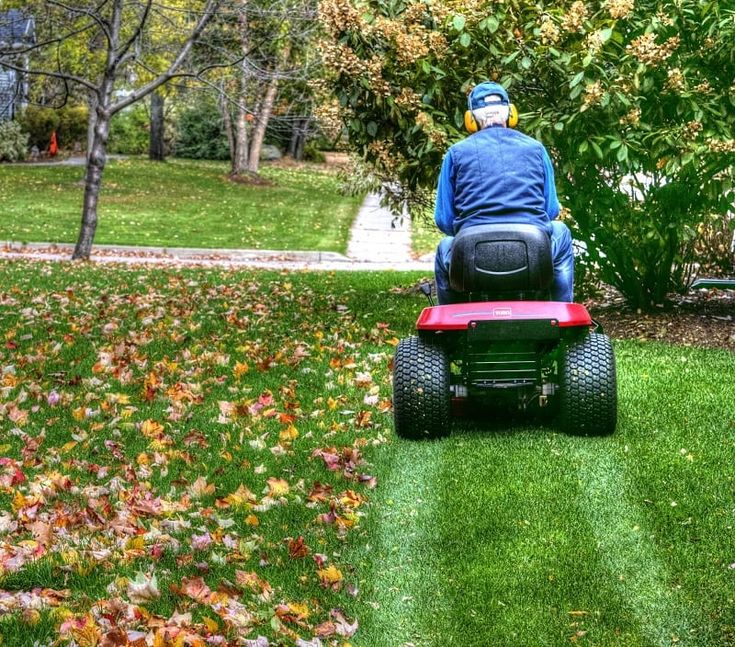 It is a thick iron plate, there is a hole in the center. A large nut is welded coaxially to the hole to one of the planes of the plate. On one strip passing through the central hole, cuts of small thickness are made in the plate. To use the puller, a bolt the size of the nut welded to the puller and two smaller bolts with large washers will also come in handy.
It is a thick iron plate, there is a hole in the center. A large nut is welded coaxially to the hole to one of the planes of the plate. On one strip passing through the central hole, cuts of small thickness are made in the plate. To use the puller, a bolt the size of the nut welded to the puller and two smaller bolts with large washers will also come in handy.
Two holes must be drilled into the pulley, located on the strip passing through its center. In many holes, a thread is cut with a single-pass tap, along the diameter of which the bolts for the puller are selected. The motor shafts have a centering groove in which it is necessary to fix the ball from a bearing of a suitable size using a thick lubricant. The central bolt of the puller will also have to be processed: a spherical recess must be made in its end face.
The puller is attached to the pulley with bolts passing through the slots and screwed into the threaded holes. The central bolt rests against a ball fixed in the centering groove of the shaft. During screwing, the bolt will unlock the puller from the shaft, so the pulley will be displaced from its seat. If there is not enough bolt travel to completely displace the pulley, several large nuts must be slipped under the side bolts.
During screwing, the bolt will unlock the puller from the shaft, so the pulley will be displaced from its seat. If there is not enough bolt travel to completely displace the pulley, several large nuts must be slipped under the side bolts.
Source
Home » How to Remove a Pulley on a Trimmer
One of the key parts of the brush cutter is the starter, designed to make it easier to start the machine's engine. Like other parts, it breaks periodically. In this case, there are two solutions to the problem: repair the starter trimmer or replace it completely. The second option is easier, but more expensive. In addition, you must first find the necessary part in the sale, since different models of lawn mowers use different starters. If you have free time and a screwdriver with the appropriate tip, you can restore the functionality of this device if you know how it works, what defects are typical for it and how to fix it. All this is in this material.
All this is in this material.
In order to repair the starter brush yourself, you need to understand how it works and know its structure. To date, trimmers have manual and automatic starters, and the first. the most common. .
The part is a plastic housing that contains a pulley with a cord wound around it to start the engine. To ensure that the cord is wound independently after winding the tool, an alloy steel belt is located inside the pulley. A ratchet is mounted on the front of the pulley that locks the starter on the tool's motor drive shaft.
Note! Depending on the model and brand from which the trimmer is made (Huter, Husqvarna and others), the ratchet pulley may consist of one or two separate components.
The principle of operation of the manual starter is the same for Chinese, European and domestic gas trimmer, whether Hitachi, Patriot or other manufacturer. To start the engine, the owner of the device pulls sharply on the cord. From this movement, the pulley rotates, and the protrusions located on it engage with the dogs located on the flywheel. Then the flywheel and crankshaft begin to rotate the pulley. After starting the engine, under the action of centrifugal force, the combs and dogs diverge in different directions. And after the user releases it, the starter cord is wound around the pulley using a return spring.
To start the engine, the owner of the device pulls sharply on the cord. From this movement, the pulley rotates, and the protrusions located on it engage with the dogs located on the flywheel. Then the flywheel and crankshaft begin to rotate the pulley. After starting the engine, under the action of centrifugal force, the combs and dogs diverge in different directions. And after the user releases it, the starter cord is wound around the pulley using a return spring.
Important! With heavy use, the drive cord breaks over time and the spring wears out. These parts are easy to replace with your own hands.
There are two failures in the starting mechanism.
In rare cases, the actuator breaks when the tool is inaccurate. The consequences can be unpleasant: a deformed cord is wound around the flywheel of a running engine, a pulley breaks and a spring breaks. . But these are isolated cases, a complete replacement of the starter is rarely required.
The assembly must be disassembled to diagnose the starter mechanism for repair. It's not hard to do, you just need a screwdriver. But during this operation you need to be careful. with careless movements of , the spring may fly off and harm the user of .
The procedure for disassembling the starter is to perform a certain sequence of actions:
Spring winding is not an easy procedure. Not everyone can attend this event for the first time, so don't worry if you can't. Attempts must be repeated until the actions are successful. If you wish, you can watch a video on the Internet, where the wizards will talk in detail about how to easily and quickly perform the operation.
Important! When winding and installing the spring, be aware that it is hot, which means that it can burst if you apply too much force. The new part is inexpensive, but you will have to spend time looking for it, which means that the mowing job will move indefinitely.
The new part is inexpensive, but you will have to spend time looking for it, which means that the mowing job will move indefinitely.
To wind the spring, place the bend in the groove and then rotate the spool to carefully place the part along the inside diameter of the spool. In this case, the spring must be constantly held by hand. if it is not fixed, the part slides and pops out, then it is necessary to rewind. When properly executed, the spring fits snugly into its seat.
To replace the element in the spool, find the hole through which the cord passes and then tie a knot. Next, you will need to wind the coil in a few turns.
Note! You can find out the exact RPM by reading the trimmer instructions or by hand. To do this, measure the length of the rope and calculate how many times it can be wrapped around the coil.
For example, if the cord is rotated six times in a circle, then to tighten the spring, it is necessary to turn the spool counterclockwise six times.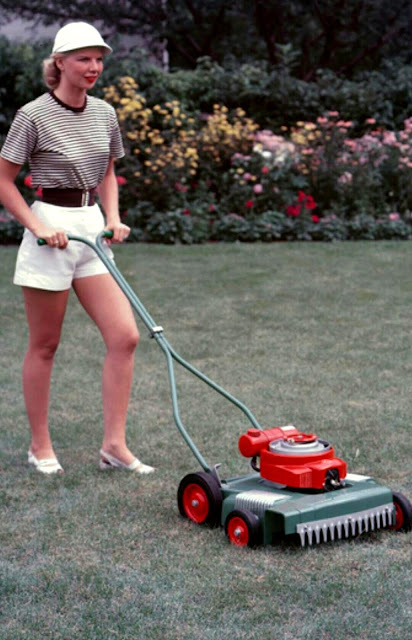 After that, you just need to pass the rope through the hole and fasten the handle to the cord.
After that, you just need to pass the rope through the hole and fasten the handle to the cord.
Sometimes spring still flies after repairs. There are two solutions to this problem:
To assemble the starter motor and install it in its original place: jammed . Looks like spring has come. To fix such a breakdown, you must install a larger screw or other washer. If you can't find the parts you need, just loosen the screw slightly and the starter will no longer jam. However, you should understand that these are temporary measures and that you should fix the problem as soon as possible.
Sooner or later problems with the starter occur on any trimmer. Stihl FS 55, MTD 790 or other brand. This fault can be delayed, but the instrument must be handled with care. In particular, don't jerk too hard, as this will break the cord or spring. It is not recommended to expose the brush to blows or other physical influences. In the event of a breakage of the starter housing and a break in the cord, it can be wound around the engine flywheel. This will break the pulley and break the spring.
In the event of a breakage of the starter housing and a break in the cord, it can be wound around the engine flywheel. This will break the pulley and break the spring.
Therefore, having discovered that the actuator has broken down on the uterus, you should not immediately rush with the help of specialists. By knowing how to troubleshoot and/or replace parts, you can carry out repairs yourself. It does not require a special tool. The procedure may seem complicated and tedious at first, but numerous online starter repair videos can help you fix the problem as quickly and easily as possible.
Husqvarna 128R trimmer on the Yandex market
Trimmer Makita EBh441U on the Yandex market
Hammer trimmer GGT-2500S on the Yandex market
Source
Those who own land are very familiar with weed control.
Especially when it often rains and the grass grows by leaps and bounds. Previously, and sometimes now, this issue was solved with the help of the good old braid.
Previously, and sometimes now, this issue was solved with the help of the good old braid.
But technology does not stand still, and now such assistants as electric and gasoline lawn mowers help in this matter.
A petrol mower has several significant advantages over an electric mower, such as mobility and no risk of electric shock. But there are also many disadvantages, for example: high price, a lot of noise, expensive fuel and significant weight.
Fig. 1. Repairable Lawn Mower
Electric mowers are cheaper, lighter, run on inexpensive energy, and are easy to maintain and repair. These advantages become the main reason for their great popularity among buyers of this type of equipment.
But despite the rather good quality, improper operation and heavy load can damage the device. In such cases, you should not immediately carry the device to the repair shop, but try to find and eliminate the cause of the breakdown yourself.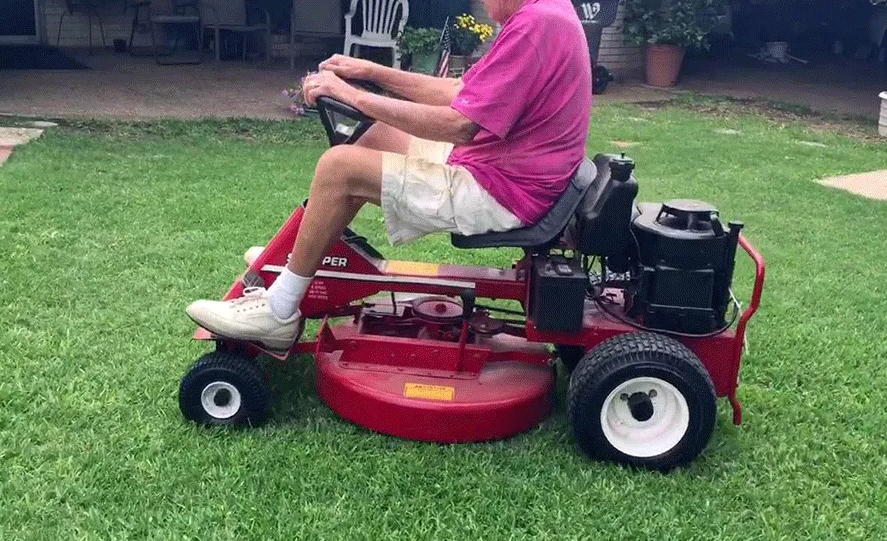 Moreover, as mentioned above, electric lawn mowers do not have as many components and parts as gasoline ones.
Moreover, as mentioned above, electric lawn mowers do not have as many components and parts as gasoline ones.
The main thing is to have some tools and faith in yourself. In this article, I will just show you how I did the repair of a lawn mower with my own hands.
Fig. 2. AL-KO lawn mower
The example is taken from AL-KO lawn mower, which had serious problems in operation, namely: the engine stopped without load and its strong overheating. The motor stops, buzzes and starts it again, only pressing the "START" button again helps. You have to restart the button almost every 30 seconds, and more often with further work.
Of course, it is possible to work this way, but it is very annoying and gives the feeling that there is a problem somewhere.
So I wanted to figure out where?
After running the mower for an hour, the engine temperature was measured. It was impossible to touch it with a finger. He radiated heat directly. If you continue to pay no attention and continue to work on such a mower, the electric motor will inevitably fail.
If you continue to pay no attention and continue to work on such a mower, the electric motor will inevitably fail.
Determine the cause of the motor overheating. To do this, remove the top cover of the housing, under which the engine and its power circuits are located.
The cover is held on by six Phillips head screws.
Unscrew these screws and remove the cover - upwards.
Fig. 4. Removing the cover
Removing the cover reveals the impeller, condenser, two connectors and the motor itself.
At first glance, there are no particular problems. The temperature has slightly darkened the motor winding, but so far this is not critical.
Fig. 5. Impeller, condenser, two connectors and the motor itself
To inspect the condenser more carefully, it is necessary to unscrew the mount and pull it out.
Fig. 6. We take out the capacitor
6. We take out the capacitor
The capacitor did not show any external damage.
Fig. 6.1. Capacitor in the lawnmower
To test it, disconnect the capacitor and energize the motor for a short time. If it did not start and started to buzz, then the capacitor is intact, because the engine started with it. Turn off the power and connect the capacitance connector back to the motor circuit.
Next, try to spin the impeller. It is mounted on the axis of the rotor and rotates rather tightly.
Fig. 7. Turning the impeller
And the reason for such a heavy rotation is a mechanical brake, which, for safety, stops the rotation of the motor when the power is turned off.
It looks like a sleeve that moves freely from top to bottom, along the axis of the rotor.
When the motor is not energized, this bushing is pressed with its upper part against the cover, on which two rubber strips are glued. Thus, the knife fixed on the rotor shaft is braked.
Thus, the knife fixed on the rotor shaft is braked.
When energized, the brake sleeve is magnetically retracted towards the center of the rotor and provides free play.
Fig. 8. Mechanical brake
Upon closer inspection of this hub with a brake, it was noticed that at the moment the engine is turned on, the brake is retracted and gives the shaft free rotation, but after 2-3 seconds it is released again and starts to slow down the motor. This should not be. Hence the stop of the knife during operation and overheating of the engine.
To find out what is the reason for such work, it is necessary to remove and disassemble the engine.
To remove it, you must first unscrew the bolt securing the blade (see figure below).
Fig. 9. Unscrew the knife fastening bolt
This is done with a nineteen key.
Direction of rotation as normal bolt, not left-handed. That is, it should be unscrewed counterclockwise, and twisted clockwise.
The head of the bolt is plastic, so when using a wrench, it must be well inserted so as not to “lick off” the edges.
Adjustment is made with washers under the bushing (see illustrations below).
Fig. 12 Fig. 13 Fig. 14
We remove everything, only the motor shaft and the hexagon screws for its fastening remain.
The wrench for these bolts has a face spacing of 6 mm. Unscrew them counterclockwise. Removing the last screw, with one hand, hold the engine.
Fig. 15. Motor shaft. We unscrew the bolts
Next, we put the mower on the wheels, and clasping the engine with our hands, we raise it.
Fig. 16. Fig. 16 Lawn mower engine 17. Lawn mower engine
To disassemble the motor, the tie-down pins must be released. We unscrew them all.
Fig. 18. Disassemble the lawnmower motor
Remove the impeller with two screwdrivers.
Fig. 19. Removed the impeller
Proceed to the removal of the rear cover. A wooden block and a hammer will help with this.
But first you need something sharp to mark the position of the covers in relation to the motor housing.
Fig. 20. Marking the position of the covers
Put the engine on its side and hit with a hammer, through a wooden gasket, on the rear shaft.
Fig. 21. We hit the rear shaft
The motor at this moment should be held by another person.
We strike until the moment when the axle completely comes out of the bearing.
Fig. 22 Fig. 23 Fig. 24
You can also lift the motor vertically and hit the shaft against a piece of wood. This method can also remove the shaft from the bearing.
If the shaft is out, remove the cover, brake bushing and two brackets on it with a screwdriver.
Fig. 25. Remove 2 brackets with a screwdriver Fig. 26. Brake bushing
Now that the brake parts have been removed, put the rear cover back on. We are looking for previously set marks, and combines them.
Fig. 27. Brake elements removed. 28. Install the back cover back
Thread the connector with wires into the cutout of the cover.
Next, we put the cover with the bearing on the shaft and tapping on it from all sides, we achieve a complete installation.
Don't hit the lid too hard to avoid cracking the brittle aluminum. Therefore, blows must be applied through wood or rubber.
Fig. 29. put on the cover with the bearing
When the cover with the bearing is tightly “sat down”, we twist the tightening pins. They should be clamped gradually diagonally. At the same time, we achieve maximum ease of rotation of the motor shaft.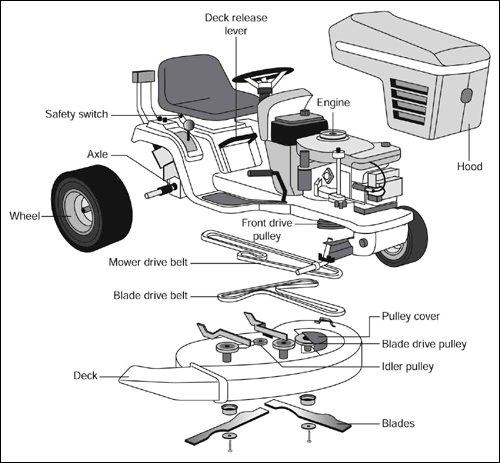
Fig. 30. We twist the tightening pins
Next, we put the impeller on the rotor. With its help, the engine is cooled during operation.
Fig. 31. We put the impeller on the rotor
First, we put the impeller on with our hands, and then, with light taps on the center with a hammer. The part should not be “set too deep” either, otherwise it will cling to the engine cover.
Now we lower the engine into the seat.
Fig. 32. Lowered the engine into the seat
We connect the motor and capacitor connectors. It is very important not to confuse which plug goes where. Otherwise, the engine will not work correctly. Therefore, when disassembling, everything must be signed and photographed.
Fig. 33. Connect plugs
Next, you need to fix the motor. To do this, we put the mower on its side, and holding the engine by the impeller, we combine the holes for the bolts.
After tightening all four bolts, tighten them with a hex wrench. This must also be done diagonally.
Fig. 34. We tighten the bolts
After that, we put the next part on the shaft.
Fig. 35. Mounting part
The knife must be installed with the curves upwards. They are needed in order to push the cut grass back into the container.
Fig. 37. We clamp the bolt
Now we put the machine on the wheels, and install the protective cover. We fix it with screws.
Fig. 38. Install the protective cover
Turn on the engine and listen to its work. In this case, there should be no extraneous sounds, but only a slight rustling of the knife.
Final check of the mower on a patch of grass.
Fig. 39. The lawn mower is working!
As you can see, the machine copes with its task without shutdowns and braking. Now you can not be afraid that the engine will overheat and come out of a standstill.
Now you can not be afraid that the engine will overheat and come out of a standstill.
Source
Replacing the bearings on the Gardena electric motor. Gardena engine repair (gardena)
New do-it-yourself pulley puller for lawn mowers and washing machines
DIY - HOW TO REMOVE THE PULLEY FROM THE ENGINE FROM THE WASHING MACHINE AND NOT DAMAGE THE SHAFT
ROTAK 40 (trying to replace bearings)
Stuck motor in Einhell GC EM 1030 9 lawn mower0003
Removing Knife and adapter Lawn mowers) gasoline lawn mower
Disassembling and repairing any electric lawn mower
Removing the bent shaft from the lawn mower engine
Gardena PowerMax 1100 32 replacement of electric motor bearings.
Disassembly is performed differently in different models and brands of washing machines, but we omit all the nuances. Detailed instructions can be found in the videos. So, the tank has been dismantled - now the task is to pull the drum out of it in order to get to the immediate location of the bearings.
So, the tank has been dismantled - now the task is to pull the drum out of it in order to get to the immediate location of the bearings.
In the case when it consists of two halves, it is already easier: just unscrew the fixing screws or bolts, remove the latches. But some manufacturers save on fasteners by gluing both halves with glue of a special composition - in this case, you will have to pick up a hacksaw.
Before pulling bearing out of the hub, you must remove the drum.
If you have a collapsible tank, simply unscrew the screws around the perimeter and remove the top.
If the tank is soldered, you will have to cut it. To do this:
After hitting the bush several times with a hammer, push the drum out of the tank section.
Now you will learn how to remove bearing from the washing machine drum shaft without a puller:
In order to somehow knock out or remove the inner bearing race of the washing machine, you can apply the same method, only directed not at the outer, but at the inner ring of the part. This method can be used if the part cannot be removed using a conventional puller.
However, this raises another question: how to remove the remaining outer bearing race? You can also knock it out or try to pry it off with a puller.
After dismantling, clean the seat - you've done the job. If the part was defective, install a new one in place. Lubricate the sawn drum with sealant around the edges and connect the two parts. Fasten it with screws.
Now you know how to knock out and remove the bearing from the washing machine drum - you can put this knowledge into practice. Video will help you:
Video will help you:
Before replacing in the field, it is necessary to block the vehicle with reliable stops. Then remove the wheel, unscrew the bolts by first tapping them with a copper hammer. The brake drum is dismantled, the central nut is unscrewed, then the hub is pulled out. When the inner race "freezes" on the shaft, it can be removed with a puller or knocked down with a chisel. A similar procedure should be carried out very carefully so as not to damage the surface of the axis. If the upper clip remains, it is pressed out with a special tool or knocked out. If the element falls apart under heavy use, the entire assembly may need to be replaced.
Replacement of old or worn out elements is carried out in a given sequence. First you need to familiarize yourself with the mounting scheme. Then disconnect and dismantle:
 Vacuum cleaner Samsung TWIN. Fast and accurate.
Vacuum cleaner Samsung TWIN. Fast and accurate. Before installing new s/ws, check the seats, remove dirt and apply grease.
One way to remove a bearing without using a specialized tool is to heat the metal. When the temperature rises, due to the expansion of the metal, it becomes possible to remove the part without the use of physical force, which can adversely affect the performance of all equipment. If the temperature regime is violated, scale may form along the edge of the bearing. To successfully continue the dismantling work, the scale must be removed (knocked down).
When it is necessary to remove the bearing from the shaft outside the workshop (for example, in the case of car repairs on the road), two open-end wrenches are often used. It is difficult to remove the bearing from the shaft without a puller using a single wrench, as this causes it to wedged. If you grab the part with two keys, then the force is distributed evenly. In this way, even sticky clips can be dismantled, but only on condition that a support platform should be located under the key heads. To remove the nodes from the side on which the contact group of brushes is located, temporary supports are mounted, for example, end heads of the same diameter are installed.
If you grab the part with two keys, then the force is distributed evenly. In this way, even sticky clips can be dismantled, but only on condition that a support platform should be located under the key heads. To remove the nodes from the side on which the contact group of brushes is located, temporary supports are mounted, for example, end heads of the same diameter are installed.
In cases where the safety of the crankshaft bearing is not required, it can be quickly and easily removed by breaking it into pieces with a chisel.
When dismantling parts installed with an interference fit, safety regulations must be observed, otherwise, even when using a specialized tool, this operation can be traumatic.
Bearing is a small element of the vehicle's technical equipment. At a certain interval, it requires replacement, and all repairs are carried out according to the regulations, otherwise it will be difficult to decide how remove bearing and replace it in time.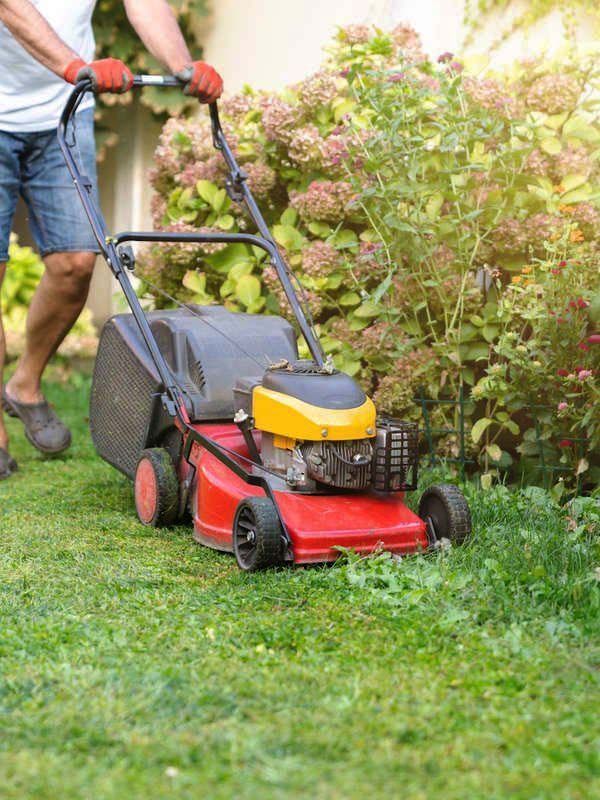 With self-repair, you can encounter a lot of difficulties, thinking not only how to remove the bearing, but also unscrew this or that nut first. There are times when the fasteners do not lend themselves, you have to use force or additional leverage. But in everything you need to have a measure, not to damage the parts that will be difficult to find later, to adapt to a car of a certain brand.
With self-repair, you can encounter a lot of difficulties, thinking not only how to remove the bearing, but also unscrew this or that nut first. There are times when the fasteners do not lend themselves, you have to use force or additional leverage. But in everything you need to have a measure, not to damage the parts that will be difficult to find later, to adapt to a car of a certain brand.
Typically, domestic washing machines have two elements that act as a link between the drum and the pulley. Details provide uniform rotation at high-speed modes of an extraction and washing.
With careful use, replacement of the bushing may be required no earlier than 5-6 years, when normal wear occurs. Breakage can occur when the laundry is loaded incorrectly or excessively, causing imbalance, damage to the gland due to water ingress, which causes corrosion and breakage.
Dismantling and installation of new elements is quite simple, the main laboriousness lies in the complete disassembly of the washer to get to the p / w.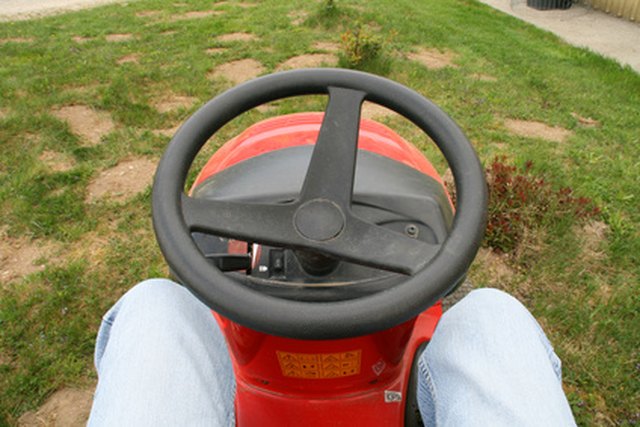
Before starting work, you should select new products, in accordance with the modification of equipment, prepare tools, consumables, be sure to turn off the power supply. All water must be drained, filters unscrewed, supply hoses disconnected.
After disassembling and taking out the drum, it is necessary to cut it along the seam with a hacksaw or a metal blade, having previously made holes along the contour on the skirt for subsequent additional fastening.
Then it is necessary to pull out the sleeve, remove the stuffing box and use the puller to remove r/w. In the absence of a special device, you can use a bar and hammer, tapping evenly along the contour of the clip.
After dismantling, carefully wipe the seats, removing dirt and old grease, check for damage, install new parts and reassemble in reverse order.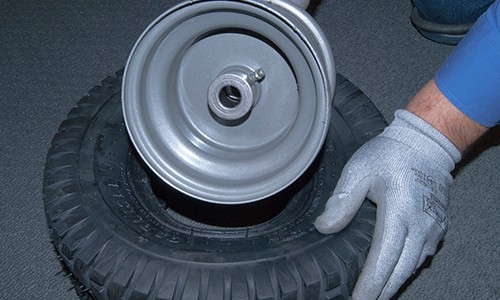
If the bearing assembly is found to be malfunctioning, they must be replaced urgently, because delay is fraught with the following, rather unpleasant consequences:
Do not over tighten when replacing bearings. If you can't do it yourself - call the master; if you procrastinate, repairing the washing machine will cost you much more.
Usually, two elements are installed in household washing machines that perform the connecting function of the drum with the pulley. Details provide uniform rotation at high-speed modes of an extraction and washing.
Details provide uniform rotation at high-speed modes of an extraction and washing.
With careful operation, the replacement of the p / w may be required no earlier than 5-6 years, when natural wear occurs. Breakage can occur when the laundry is loaded incorrectly or excessively, causing imbalance, damage to the gland due to water ingress, which causes corrosion and breakage.
Dismantling and installation of new elements is quite simple, the main laboriousness lies in the complete disassembly of the washer to get to the p / w.
Before starting work, you should select new products, in accordance with the modification of equipment, prepare tools, consumables, be sure to turn off the power supply. All water must be drained, filters unscrewed, supply hoses disconnected.
After dismantling and taking out the drum, it is necessary to cut it along the seam with a hacksaw or a metal blade, having previously made holes along the contour on the skirt for subsequent additional fastening.
Then it is necessary to pull out the sleeve, remove the stuffing box and use the puller to remove r/w. In the absence of a special device, you can use a bar and hammer, tapping evenly along the contour of the clip.
After dismantling, carefully wipe the seats, removing dirt and old grease, check for damage, install new parts and reassemble in reverse order.
Replacing a bearing
The main purpose of a bearing is to reduce friction and protect mechanisms from rapid wear. There is a wide variety of bearings. They differ in purpose, size and location. The part is subject to wear and therefore requires timely replacement. But in solving the problem of how to remove the wheel bearing, a lot of difficulties arise, so experienced craftsmen and amateurs have come up with reliable ways to remove the bearing. Let's consider some of them.
If it is not possible to apply the first method when deciding how to remove bearing with a puller, then use the third method.
It will require skill and the use of force, auxiliary tools. What is the course of action?
Thus, the third method is used in the event that the bearing is completely worn out, does not come out of its seat, therefore, it is necessary to apply force. There are times when it is difficult to solve the problem of how to remove the rear bearings from the shaft, so they simply have to be cut out. Experienced craftsmen resort to such a radical method, who got a completely worn-out running system for repair, and there is no other way to get a bearing to replace it. Beginners are not recommended to use the third method, because they simply cannot cope, but can damage other elements of the running system. In this case, an elementary bearing replacement will cost a pretty penny.
Beginners are not recommended to use the third method, because they simply cannot cope, but can damage other elements of the running system. In this case, an elementary bearing replacement will cost a pretty penny.
Without a puller, in the absence of standard tools, you will need a flyover or a garage pit. One of the most effective methods is dismantling with a conventional chisel, which does not require special knowledge. The old element is simply cracked with a hammer blow and a new one is installed. The main task in the performance of work is to avoid damage and not be injured. It is advisable to use a gentle technique and protective devices.
In a similar way, the problem is solved, how to remove wheel bearing .
An equally effective way is to remove the part using an inertial hook, which you can make yourself from a reinforcing piece or a piece of wire. The diameter must be at least 8 mm, and the length must be at least 400 mm, one end must be bent at an angle of 90 degrees so that the inner clip can be fixed. You will also need some kind of hollow cylinder or an old heavy gear, into which a prepared metal bar will freely enter, to the back end of which another small segment should be welded perpendicularly so that you can hold it with your hand.
You will also need some kind of hollow cylinder or an old heavy gear, into which a prepared metal bar will freely enter, to the back end of which another small segment should be welded perpendicularly so that you can hold it with your hand.
When the fixture is ready, the hook clings to the inner race, and the gear should be beaten back and forth against the stopper until the part is completely dismantled.
Extended car repair for advanced - on the knee, with improvised means and for a penny. Bearing replacement.
Before field replacement, the vehicle must be blocked using secure stops. Then remove the wheel, unscrew the bolts by first tapping them with a copper hammer. The brake drum is dismantled, the central nut is unscrewed, then the hub is pulled out. When the inner race "freezes" on the shaft, it can be removed with a puller or knocked down with a chisel.